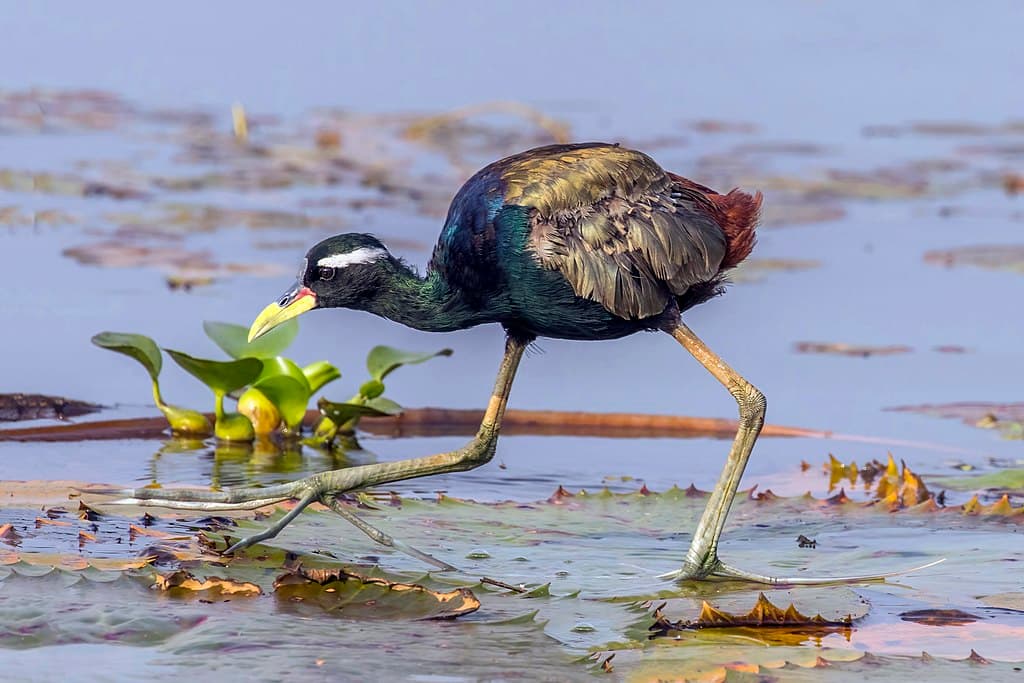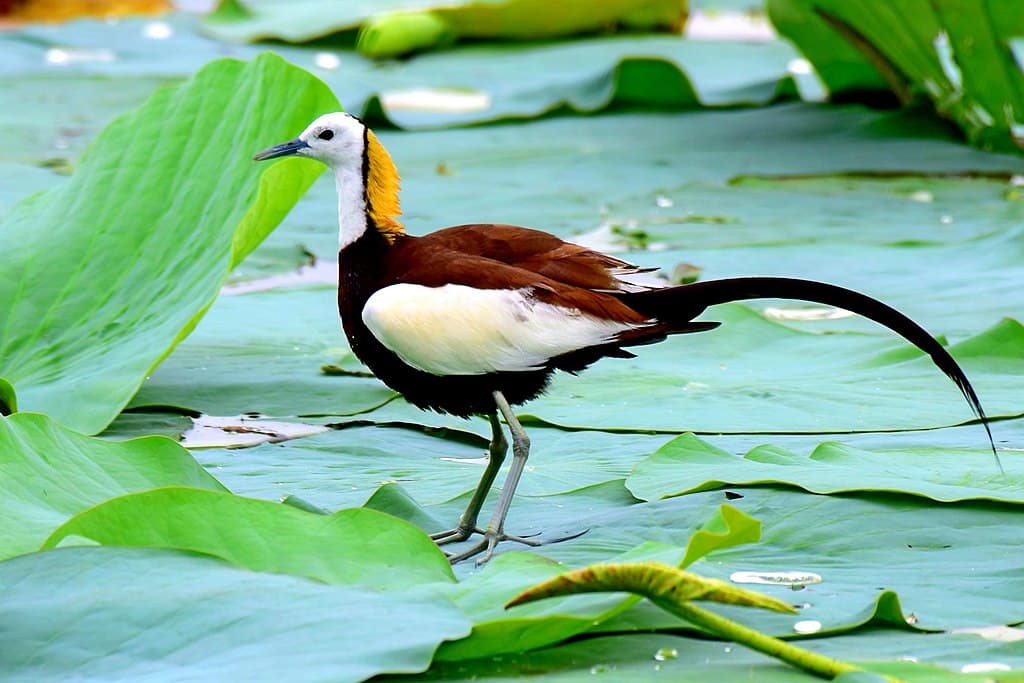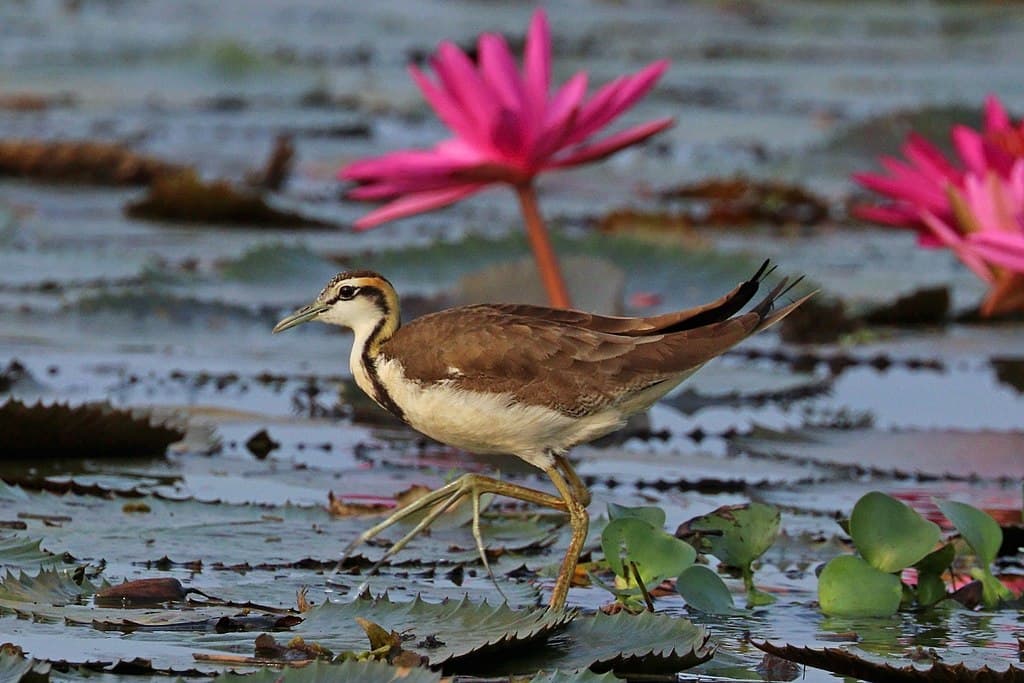The first time I knew about Jacana was actually in 2022 when I saw the photo of their large feet on the internet. Little did I know that there are also 2 jacana species in Cambodia as well which was quite surprising. So we are going to focus on just the two of them today, check out below.
Bronze-Winged Jacana (ត្រយ៉ងខ្លួនស)

Bronze-winged jacanas are medium-sized birds that grow to about 29 centimeters long. Just like the name suggests, they have bronzy brown with a green sheen and reduced tubercular carpal spur. These birds have black a head, neck, and breast that contrasts with the broad white line over their eyes. The most interesting of this bird species is definitely the green legs with long toes and elongated nails. A bronze-winged jacana has long feet that spread to balance its weight as it walks to prevent sinking.
This wader bird is native to Southeast Asia where they inhabit lowland wetlands and temperate coniferous forests. Not different from other jacana species, this one also forages on lilies and other floating aquatic vegetation in its habitats. They are relatively solitary, and they spend most of their days foraging for food. Female jacanas focus on mating while the males raise the young which is a unique reverse role among birds. The fathers pick up their chicks and carry them under their wings while the mothers are away.
Males build a nest platform made of leaves and stem that they place on floating vegetation near the water’s edge. Sometimes, they also put their eggs on a lotus leaf and cover them with vegetation to hide them from predators. Being aquatic-nesting birds, they experience a high level of nest predation from birds of prey, fish, snakes, and turtles. Besides natural predators, habitat loss is another threat to their population but their number is doing okay.
Pheasant-Tailed Jacana (ត្រយ៉ងយក្ស)

Pheasant-tailed jacanas are medium-sized birds that have a very interesting appearance. They have a chocolate brown body and a white face, and white front and wings with pale brown wing coverts. A pheasant-tailed jacana is very easy to recognize as it is the jacana species with the longest tail. During the breeding season, the elongated central tail feathers that earn its name start to appear. Just like the previous jacanas and other jacana species, pheasant-tailed jacanas also have elongated toes and nails. These special characteristics allow them to walk on floating vegetation in shallow lakes which is where they live.
Speaking of where they live, pheasant-tailed jacanas distribute across tropical India and Southeast Asia. On top of that, pheasant-tailed jacanas are the only jacana species that migrate long distances. They like to be in freshwater wetlands, lakes, ponds, rice fields, and swamps where floating vegetation is sufficient. Apart from aquatic plants, these birds also feed on insects, mollusks, small fish, snails, worms, and other invertebrates as well.
While most male birds court the females, female jacanas are the ones who court the males. They also build a nest, and the males will incubate the eggs while the females leave to court a different male. During the first few days after laying the eggs, females may defend the nests by chasing other waterbirds. Predation is inevitable as eggs may be preyed on by pond herons while birds of prey take on chicks.
Related Post: Ibis Species In Cambodia
